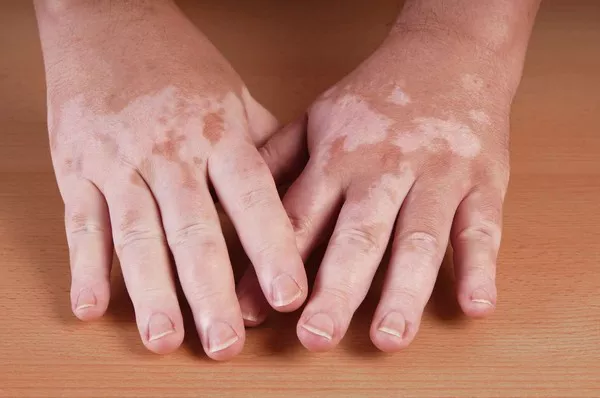White patches on the skin, a condition known as vitiligo, can be a source of distress for many individuals. This autoimmune disorder affects the pigmentation of the skin, leading to the development of white patches that can appear on various parts of the body. While there is no definitive cure for vitiligo, several natural remedies have shown promise in managing the condition and reducing the appearance of white patches. In this article, we will explore some of the best home remedies for vitiligo, backed by scientific evidence and anecdotal support.
Understanding Vitiligo
Before delving into the remedies, it is essential to understand what vitiligo is and how it manifests. Vitiligo occurs when the melanocytes, cells responsible for producing melanin (the pigment that gives skin its color), are destroyed or stop functioning. As a result, depigmented patches appear on the skin, which can vary in size and location. While the exact cause of vitiligo is not fully understood, it is believed to involve a combination of genetic, autoimmune, and environmental factors.
Natural Remedies for Vitiligo
1. Turmeric
Turmeric, a spice commonly used in cooking and traditional medicine, has been touted for its anti-inflammatory and antioxidant properties. Curcumin, the active compound in turmeric, has been studied for its potential in managing various skin conditions, including vitiligo. Research suggests that curcumin may help stimulate melanocyte proliferation and reduce oxidative stress in the skin, which could potentially aid in repigmentation.
To incorporate turmeric into your routine, you can create a paste by mixing turmeric powder with water or coconut oil and applying it directly to the affected areas. Leave the paste on for 15-20 minutes before rinsing it off with warm water. Repeat this process daily for best results.
2. Ginkgo Biloba
Ginkgo biloba, a popular herbal supplement derived from the leaves of the ginkgo tree, has been studied for its potential benefits in treating vitiligo. Some research suggests that ginkgo biloba extract may help improve melanin production and promote repigmentation in individuals with vitiligo. Additionally, its antioxidant properties may protect the skin from oxidative damage, which is thought to play a role in the progression of the condition.
You can take ginkgo biloba supplements orally according to the manufacturer’s instructions. Alternatively, you can prepare a topical solution by diluting ginkgo biloba extract with water and applying it to the affected areas of the skin.
3. Vitamin D
Vitamin D is crucial for overall skin health and immune function. Some studies have suggested a potential link between vitamin D deficiency and the development of autoimmune conditions like vitiligo. Supplementing with vitamin D may help regulate the immune response and support melanocyte function, potentially aiding in the treatment of vitiligo.
You can increase your vitamin D levels through sun exposure, as the skin naturally produces vitamin D when exposed to sunlight. However, it is essential to balance sun exposure to avoid sunburn and skin damage. Alternatively, you can take vitamin D supplements or consume vitamin D-rich foods such as fatty fish, fortified dairy products, and mushrooms.
4. Black Cumin Seed Oil
Black cumin seed oil, also known as Nigella sativa oil, has been used for centuries in traditional medicine for its various health benefits. Studies have shown that black cumin seed oil possesses anti-inflammatory, antioxidant, and immunomodulatory properties, which may make it beneficial for individuals with vitiligo. Some research suggests that topical application of black cumin seed oil may help promote repigmentation and reduce the spread of depigmented patches.
To use black cumin seed oil, apply a small amount directly to the affected areas of the skin and massage gently until absorbed. Repeat this process twice daily for optimal results.
5. Aloe Vera
Aloe vera is a popular natural remedy for various skin conditions, thanks to its soothing and healing properties. While research specifically on aloe vera for vitiligo is limited, its anti-inflammatory and immunomodulatory effects may help alleviate symptoms and support skin health. Additionally, anecdotal evidence suggests that aloe vera gel may help promote repigmentation in individuals with vitiligo.
You can extract fresh aloe vera gel from the leaves of the plant and apply it directly to the affected areas of the skin. Alternatively, you can use commercially available aloe vera gel or creams. Apply the gel to the skin and leave it on for at least 30 minutes before rinsing it off with water. Repeat this process twice daily for best results.
Conclusion
While vitiligo can be a challenging condition to manage, natural remedies offer a gentle and holistic approach to treatment. Incorporating turmeric, ginkgo biloba, vitamin D, black cumin seed oil, and aloe vera into your skincare routine may help promote repigmentation and reduce the appearance of white patches on the skin. However, it is essential to consult with a healthcare professional before starting any new treatment regimen, especially if you have underlying health conditions or are taking medication. With patience and consistency, these natural remedies can complement conventional treatments and support overall skin health in individuals with vitiligo.

























